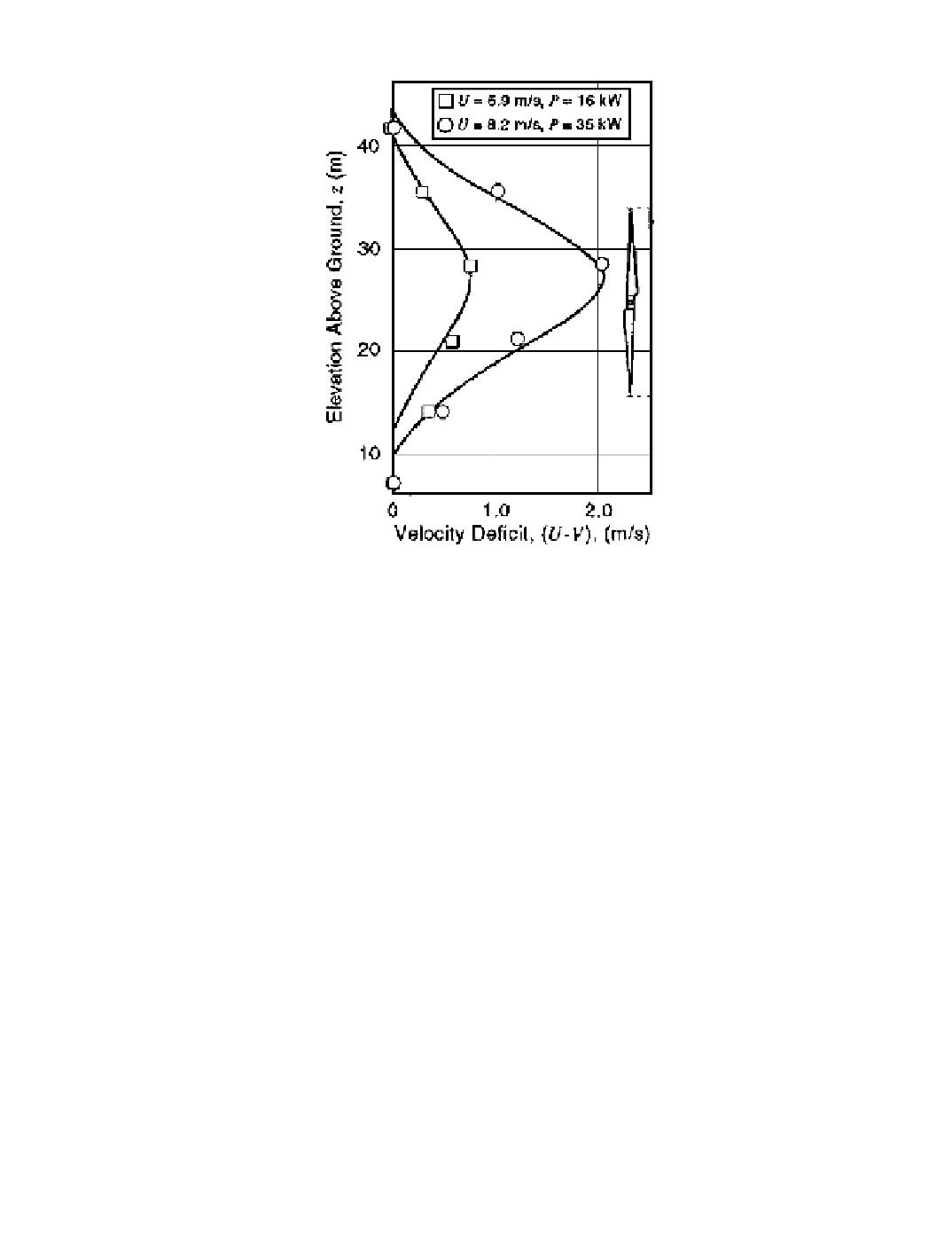Environmental Engineering Reference
In-Depth Information
Figure 6-19. Field measurements of the velocity profile downwind of an operating
medium-scale HAWT.
[Faxen 1978]
Field Tests on Multiple Turbines
Wind speed measurements have been made in the wake of a Mod-2 HAWT (Fig. 3-38)
using instruments attached to tethered balloons [Zambrano
et al.
1982]. Unfortunately, the
results of these tests are too scattered to provide definitive corroboration of wake models.
To overcome problems with data scatter, the absence of steady-state conditions, and the
expected power differences between widely-spaced turbines, Neustadter and Spera [1984]
developed an energy method for measuring wake interference losses. In this procedure, the
energy output of a test turbine, with and without wake effect, is normalized by the energy
output of a nearby control turbine during the same test periods. This corrects for changes
in the free-stream wind speed prior to calculating interference losses.
The required arrangement of wind turbines is illustrated in Figure 6-20, using the 3-unit
Mod-2 HAWT cluster as an example. The test and control turbines (Units 1 and 3,
respectively) run continuously while the wake-producing turbine (Unit 2) is operated
intermittently. Test data are the energy production in 10-min segments for the three
turbines over a cumulative operating time of 27 hours. Only the time segments during
which the wake envelops the test turbine (wind azimuths from 250 to 280 deg in this case)
are used. For the 7-diameter downwind spacing of these tests, the energy deficit was found
to be 10.4 percent, which is compatible with model predictions. The equivalent average wind
velocity deficit was only 0.3 m/s, which emphasizes the difficulties of measuring instan-
taneous power and wind speed and the advantages of measuring energy output.

Search WWH ::

Custom Search